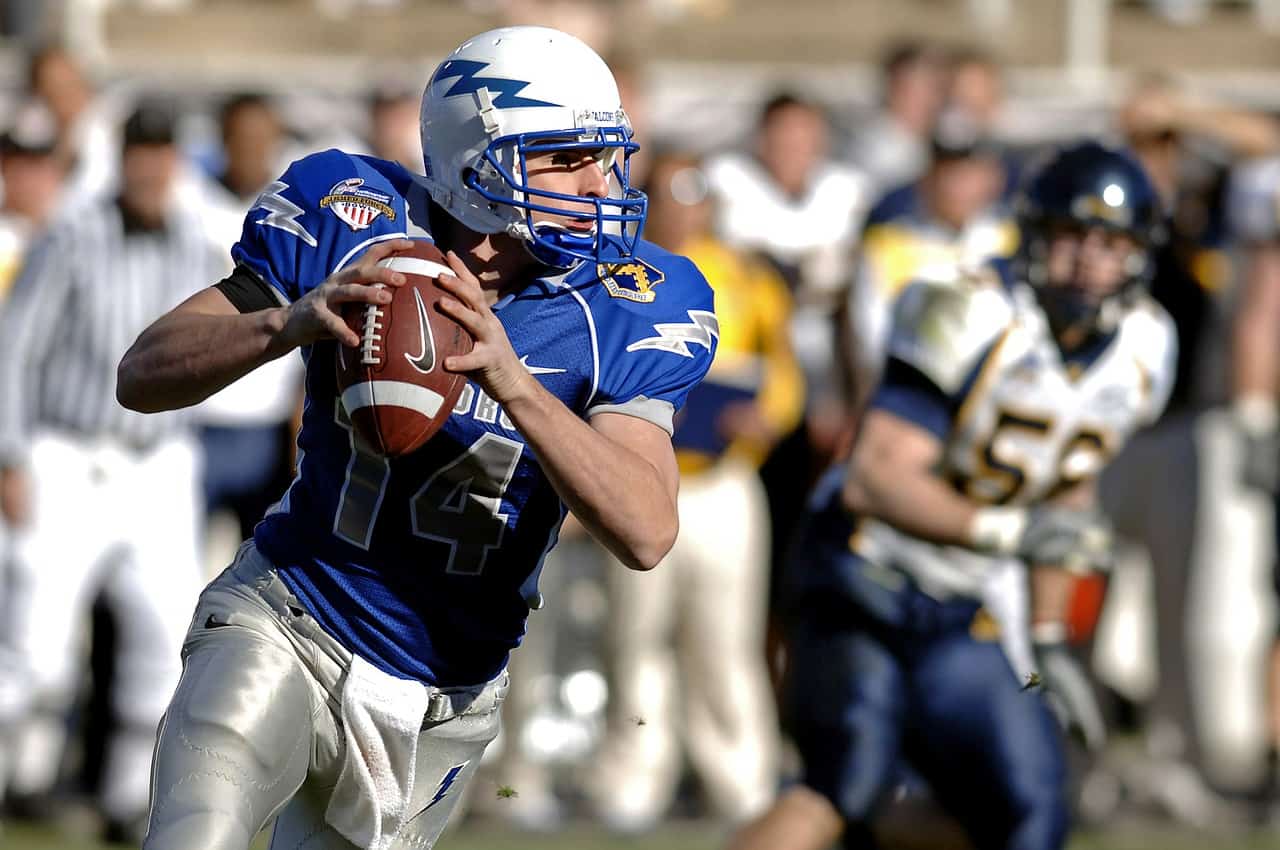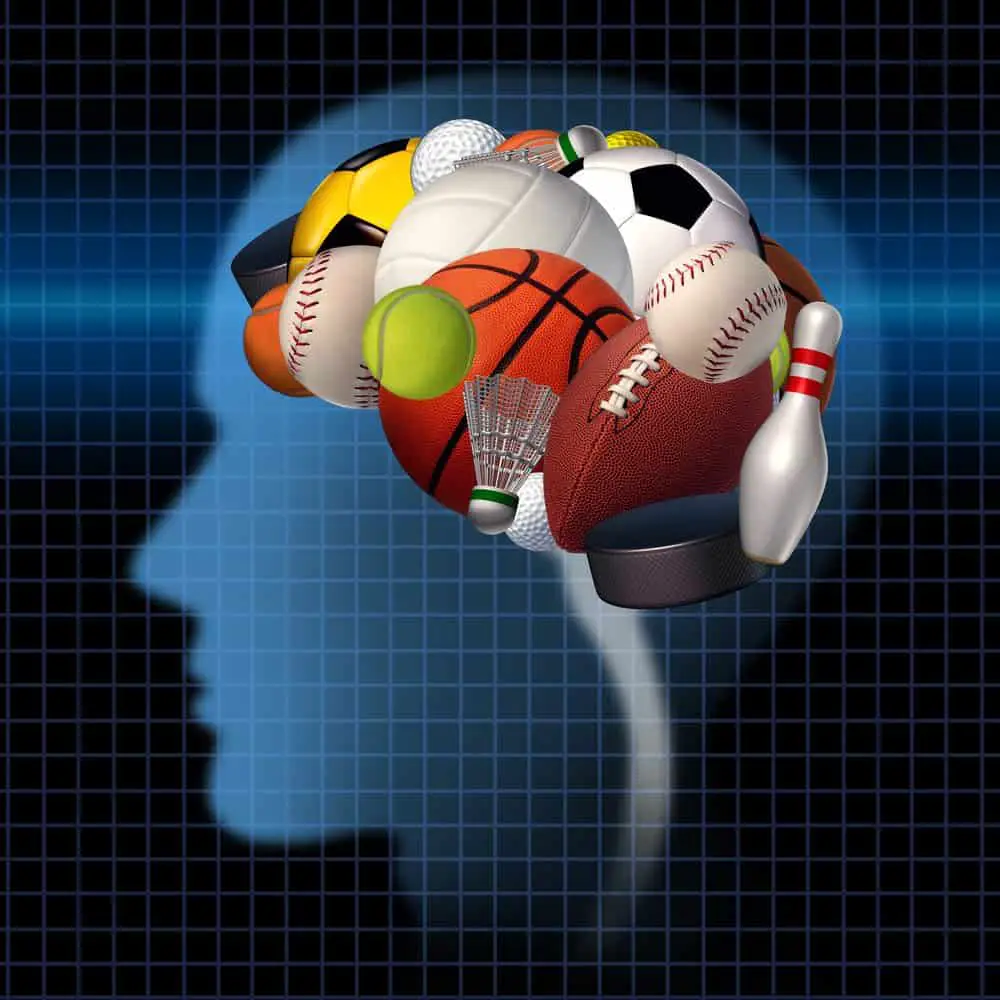Table of Contents
Sports psychology plays a crucial role in improving and maintaining the performance of athletes. Sports psychology is typically only a part of a larger strategy for performance maintenance and improvement, which can include such things as physical training, practice, and diet. Just as there are many components of a performance maintenance and improvement regimen, there are often multiple components of a treatment plan in sports psychology. One of the potential treatment options, particularly if an athlete is having issues with recurrent negative thoughts, is cognitive restructuring.
*This post may contain affiliate links. As an Amazon Associate we earn from qualifying purchases.
What Is Cognitive Restructuring?
Cognitive restructuring is a technique used by psychologists to assist in re-framing how a person perceives and thinks about certain situations in order to modify how they approach those situations. By modifying the thought structure that emerges in response to a specific set of circumstances, it is possible to change how a person responds to those circumstances, and, ultimately, to improve the outcome of those situations.
Cognitive restructuring generally follows a four-step process. First, a person examines their responses to specific circumstances or situations to identify negative thought patterns or negative self-statements. Second, a person selects and rehearses coping self-statements that they could use in place of negative self-statements. Third, a person begins to use the coping self-statements in place of negative self-statements. Finally, a person will select and rehearse positive self-statements.
Cognitive Restructuring in Context
Cognitive restructuring is a powerful psychological technique, but it is rarely used in isolation. Frequently, the technique is used as a component of a broader approach to therapy, like rational emotive behavior therapy or cognitive-behavioral therapy.
- Rational Emotive Behavior Therapy
- Cognitive-Behavioral Therapy
Rational emotive behavior therapy focuses on the application of rationality and logic to beliefs held by a person. Rational beliefs, which are desirable, are in line with reality, capable of change, and self-enhancing. Irrational beliefs are those beliefs which are not in line with reality, inflexible, and self-defeating. Irrational beliefs are a cause of significant stress and distress, and can adversely affect performance in stressful situations.
One example of an irrational belief might be being convinced that nothing you do is good enough. This belief may distort your perception of your work, causing you to question the worth of work that your peers see as quite good. This belief might also make it difficult for you to apply for promotions or complete accurate self-assessments as part of a review process.
When used as part of rational emotive behavior therapy, cognitive restructuring can assist with pinpointing and replacing unhealthy irrational beliefs with more positive rational beliefs. In the example above, cognitive restructuring would first be used to identify the negative self-statement, in this case that nothing the individual does is good enough. Coping statements would be chosen and rehearsed, then substituted for the negative self-statement. Finally, the individual would choose and rehearse positive self-statements.
Ultimately, by replacing the irrational thought, the individual should see an increased ability for accurate self-assessment. This more accurate self-assessment, coupled with the removal of the expectation of failure, could lead to more success in applying for promotions and a smoother review process.
Cognitive-behavioral therapy combines cognitive and behavioral procedures. Some treatment plans will focus more heavily either cognitive or behavioral therapy, but those who make use of cognitive-behavioral therapy as part of their practice generally operate with a shared appreciation of basic learning principals and the role of key mental processes in human behavior. For cognitive-behavioral therapy, key mental processes are those which concern the acquisition of knowledge and comprehension.
Frequent Psychological Tools Used in Conjunction with Cognitive Restructuring
Most often, cognitive restructuring is used as one of many tools to modify thought structures and behaviors. Two related practices often used in conjunction with this technique are mindfulness and self-compassion.
- Mindfulness
- Self-Compassion
To perform mindful mediations, a single focus of attention is chosen. Frequently, the focus is on breathing. For a set amount of time, the individual focuses on experiencing their object of focus. In the case of breathing, the focus would be on the sensations experienced during breathing rather than thinking about the process of breathing or controlling the breath.
During mindful meditation, any thoughts that enter your mind are gently dismissed and the attention is returned to the object of focus. Mindfulness can assist with increased clarity and ability to gently dismiss negative self-statements.
The practice of self-compassion involves addressing yourself with kindness and concern when you experience suffering. For example, in the event that you make a mistake, instead of telling yourself that you did something stupid, you would instead recognize that you made a mistake and that that is a part of human experience.
While self-compassion is not a technique developed as part of cognitive restructuring, it can be very helpful in addressing negative self-statements and reinforce the adoption of coping self-statements and positive self-statements.
How Does Cognitive Restructuring Help Athletes?

Athletes are expected to perform well in high-pressure situations. These high-pressure situations have a number of stressors that can negatively impact the emotional health and performance of athletes. Because cognitive restructuring is an excellent technique for re-framing negative thoughts that arise in response to stressful situations, sports psychology often makes use of this technique. Benefits have been reported across a wide range of sports, including baseball, basketball, boxing, golf, karate, skiing, tennis, and volleyball.
Cognitive-behavioral techniques, including cognitive restructuring lead to increased sporting performance, increased personal satisfaction with performance, reduced anxiety, increased ability to handle stressful situations, and increased motivation. These changes are widely and often rapidly observed following the beginning of treatment.
Leeds Beckett and Loughborough Universities Study
As cognitive-behavior therapy had proven effective at helping to manage stress and increase positive emotions in other high-pressure situations, Leeds Beckett and Loughborough Universities did a study of the effectiveness of cognitive-behavior therapy on female hockey players that included cognitive restructuring as part of the therapy.
Prior to beginning any treatment, potential participants were assessed to see which appeared to have the most potential to respond positively to cognitive-behavioral therapy. Once players were chosen for participation, and the course of treatment for the study ran for nine months. During this time the goals were for the players to identify what circumstances caused them the most stress, understand their emotional responses to that stress, and begin to implement more helpful positive responses. Each player in the study received personalized cognitive-behavioral treatment.
The athletes in the study listed a number of sources of stress, including being selected for a team, lack of communication from coaches, interpersonal issues with teammates, difficulty with training, and large crowds. The athletes in the study were all hockey players, but their list of potential concerns is applicable to athletes in many sports.
Results were seen beginning very quickly, with players shifting from seeing stressful circumstances as threats to seeing stressful situations as challenges. It was reported that this re-framing greatly increased positive feelings about performance and less stress.
How to Use Cognitive Restructuring in Sports Psychology
Cognitive restructuring is an important tool in sports psychology. In order to use this treatment technique effectively however, it needs to be administered by someone with adequate knowledge and training to effectively work with athletes. Those who wish to practice sports psychology that incorporates cognitive restructuring may need to complete training that take a significant amount of time and dedicated study.
Those who are hoping to improve their athletic performance by incorporating this technique into their lives are best suited to find an experienced sports psychology professional who makes use of the technique. If there are no sports psychology professionals available, interested athletes should be able to see any psychology professional who employs the technique, but those with experience with athletes are likely to deliver the best results.
The effectiveness of cognitive restructuring makes it a desirable tool for many athletes, but it should be kept in mind that it is likely to be one of many tools provided during the course of sports psychology treatment and that treatment is unlikely to consist solely of cognitive restructuring.
Conclusion
Cognitive restructuring is an incredibly promising technique for assisting athletes in better coping with the high-pressure situations that high-level athletes routinely experience. Those athletes who undergo treatment that includes this technique frequently see marked and rapid results that include increased athletic performance, increased positive feels about athletic performance, increased motivation, and decreased stress.
Cognitive restructuring is likely to be part of an individualized, comprehensive sports psychology treatment that is likely to include other treatment techniques and introduce additional tools to assist with stress management and emotional management. These treatments and techniques will see the best results if they are integrated into an athletic improvement and maintenance regimen that also includes other lifestyle management to address a healthy exercise and training regimen, diet, and sleep schedule.
Undertaken by qualified sports psychology professionals, a course of treatment that includes cognitive restructuring is an excellent way to increase both their emotional well-being and athletic performance. These positive results are experienced in a very high percentage of cases and results begin to emerge quickly after beginning treatment, so improving your performance soon is certainly a reasonable expectation for those who are beginning therapy that includes cognitive restructuring.

